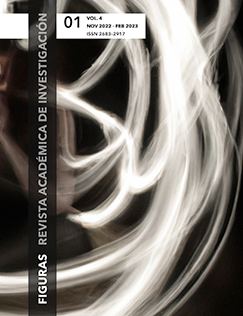The Conflict Concerning the Ethical and Aesthetic View of tò kalón in Xenophon’s Symposium
DOI:
https://doi.org/10.22201/fesa.26832917e.2022.4.1.238Keywords:
tò kalón, Kalokagathía, Xenophon, Symposium, Ethics, AestheticsAbstract
The Greek term “tò kalón” has a wide variety of connotations, among which the ethical and the aesthetic aspects stand out. Scholars debate whether there is a clear separation between those two aspects, whether one subsumes the other, or more broadly what their relation is.
In this paper, I propose that Xenophon’s Symposium is a good scenario to explore the intricacies between different aspects of tò kalón. Not because the dialogue offers any deep philosophical discussion about the nature of tò kalón, but because Xenophon presents this dialogue as an illustration of tò kalón.
I shall argue that, even though it is generally agreed that tò kalón (fineness, beauty) elicits praise and commendation, experiencing or appreciating it does not necessarily lead to being able to provide its definition, just as having a definition of it does not necessarily affect our appreciation of it.
Downloads
References
Gray, V. 2004. “Xenophon.” In Narrators, Narratees, and Narratives in Ancient Greek Literature: Studies in Ancient Greek Narrative, vol. 1, edited by Irene J. F. de Jong, René Nünlist and Angus Bowie, 129-146. Amsterdam: Brill.
Huss, Bernhard. 1999. “The Dancing Sokrates and the Laughing Xenophon, or the Other Symposium.” The American Journal of Philology (The Johns Hopkins University Press) 120, no. 3 (Autumn): 381-409.
Irwin, T. 2010. “The Sense and Reference of Kalon in Aristotle.” Classical Philology (The University of Chicago Press), edited by Elizabeth Asmis, special issue, Beauty, Harmony, and the Good 105, no. 4 (October): 381-396. https://doi.org/10.1086/657027
Morgan, K.A. 2007. “Chapter twenty-three. Xenophon.” In Time in Ancient Greek Literature: Studies in Ancient Greek Narrative, vol. 2, edited by Irene J. F. de Jong and René Nünlist. Amsterdam: Brill.
Reid, Heather L. 2022. “A Gentleman or a Philosopher? Xenophon vs. Aristotle on Kalokagathia.” In Philodorema: Essays in Greek and Roman Philosophy in Honor of Phillip Mitsis, edited by David Konstan and David Sider, 121-134. Siracusa-Dakota Dunes: Parnassos Press-Fonte Aretusa. https://www.jstor.org/stable/j.ctv2fjwpqn.9
Reid, Heather L. 2019. “Athletic Beauty as Mimêsis of Virtue: The Case of the Beautiful Boxer.” In Looking at Beauty, “to Kalon” in Western Greece: Selected Essays from the 2018 Symposium on the Heritage of Western Greece, edited by Heather L. Reid and Tony Leyh, 77-92. Iowa: Parnassos Press-Fonte Aretusa. https://www.jstor.org/stable/j.ctvcmxpn5.9
Reid, Heather L., and Tony Leyh. 2019. “Introduction.” In Looking at Beauty. To Kalon in Western Greece. Selected Essays from the 2018 Symposium on the Heritage of Western Greece, edited by Heather L. Reid and Tony Leyh, ix-xii. Iowa: Parnassos Press-Fonte Aretusa. https://www.jstor.org/stable/j.ctvcmxpn5.4
Tomás García, Jorge. 2016. “Aesthetic Implications of Kalokagathía in Ancient Greek Culture.” The Apollonian 3, nos. 1-2 (March-June): 16-22.
Xenophon. 1997. Symposium. Translated by O.J. Todd. Cambridge-London: Harvard University Press.
Xenophon. 1971. Xenophontis opera omnia, 2nd ed. Edited by E.C. Marchant. Vol. 2. Oxford: Clarendon Press.
-
Abstract 726
-
PDF 186
-
Visor XML 78
-
ePub 20
Published
Issue
Section
License
Copyright (c) 2022 Paola Minerva Chapa-Montes

This work is licensed under a Creative Commons Attribution-NonCommercial-ShareAlike 4.0 International License.
All works published in FIGURAS REVISTA ACADÉMICA DE INVESTIGACIÓN are subject to an Attribution-NonCommercial-ShareAlike 4.0 International license. Authors are owners of their articles and can republish them in other media, provided that they communicate it to the editors and indicate the texts were originally published in FIGURAS REVISTA ACADÉMICA DE INVESTIGACIÓN






















